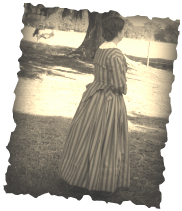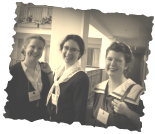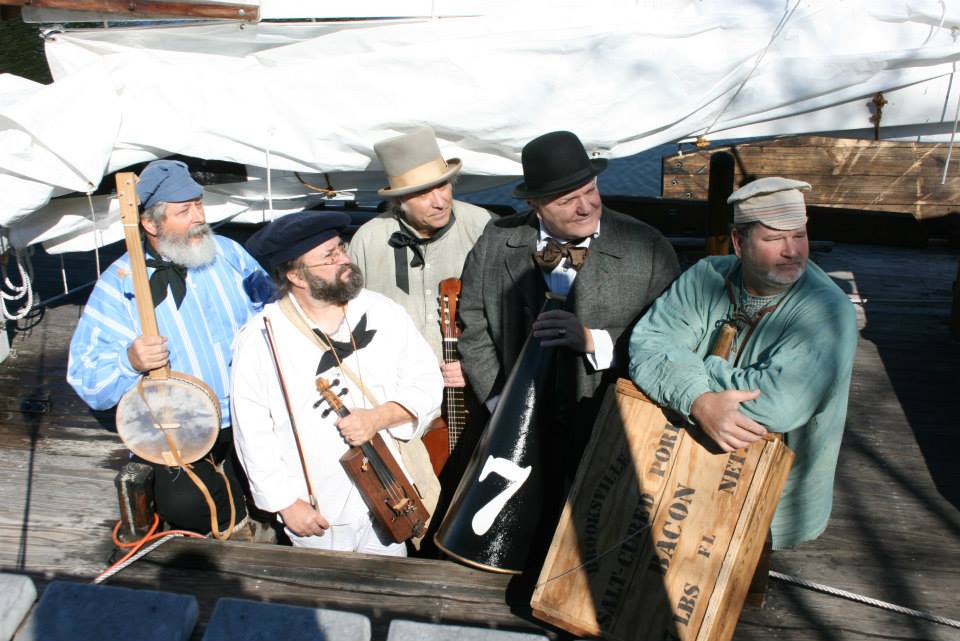Dr. Morecraft begins by asking the question: Why study Presbyterian Ecclesiology and Polity? (Yes, just in case you didn't know, Dr. Morecraft is a Presbyterian... ;])
He begins to answer that question by addressing Ezekiel 43:10-12, what he calls the "keynote text of the Westminster Form of Presbyterial Church-Government".
The context and symbolism of Ezekiel 43:11 go something like this:
First, in 40:2, when he says that “he set me on a very high mountain,” it is apparent that here is “a representation of the future glory of the kingdom of God, under the figure of an exaltation of the insignificant temple-hill, similar to that which we have already found in Isaiah 2.”1...
Second, "the description of the entrance of the glory of the Lord into the new temple in chap. xliii.1 sqq. shows how inadequate the literal explanation really is.… The simple thought is evidently the following, the presence of the Lord in the midst of his people will be manifested at a future period with a glory unknown before; and this was perfectly fulfilled in Christ." 2
Third, in 47:22–23, where foreigners are placed on the same footing as the children of Israel we learn that, when the Messiah comes, the difference between Jew and Gentile will be done away (Gal. 3:28; Eph. 2:14).
Fourth, the tabernacle and temple were both of great symbolic significance in the Old Testament, as well as in the New Testament....The temple was the place where believers lived and enjoyed communion with their Lord and Savior, and therefore it remains a symbol of the church of God (Heb. 12:22f; Eph. 2:19). 1. E. W. Hengstenberg, Christology of the Old Testament, 2 vols. (MacDill AFB, FL: MacDonald Publishing Co., n.d.), 2: 779.
2. Hengstenberg, Christology of the Old Testament, 2:779. (304-305)
In Christ the glory of the Lord has returned to His temple, the church....Central to this symbolic restoration of God's temple is “the prince” (45:7; 16–17; 46:16; 48:21), the Messianic Person in the midst of all this prophetic symbolism. It is obviously Christ the Lord to whom Ezekiel refers, because in 34:24, He is called “My
Servant David… prince among them,” and in 37:25, it is said of Him: “David My servant shall be their prince forever.” (305-306)
(1) The supremacy and glory of God appear in full splendor in Christ, in whom God returns to His temple, the church. (2) This magnificent display of the glory of God in Christ takes place as God’s people repent of their sins and give God the supreme place in their hearts and lives. (3) The distinguishing character of the church restored in Christ is an all-pervading holiness and sanctity....(4) “So that the pattern delineated is that of a true theocracy, having God Himself for king, with the community in all its members for true denizens [citizens] of the kingdom, and acceptable ministers of righteousness before the Lord.” 6. Fairbairn, An Exposition of Ezekiel, 231 (306)
"As under the Old Dispensation nothing connected with the worship or discipline [or government] of the Church of God was left to the wisdom or discretion of man, but everything was accurately prescribed by the authority of God, so, under the New, no voice is to be heard in the household of faith but the voice of the Son of God. The power of the Church is purely ministerial and declarative. She is only to hold forth the doctrine, enforce the laws, and execute the government which Christ has given her. She is to add nothing of her own to, and to subtract nothing from, what her Lord has established. Discretionary power she does not possess.7 ...That “law”is written in the Bible as the inerrant and all-sufficient revelation of the will and character of God, so that the entire church throughout all ages “may observe its whole design and all its statutes, and do them.… Behold, this is the law of the house.” 7. James H. Thornwell, The Collected Writings of James Henley Thornwell, 4 vols. (Edinburgh: The Banner of Truth Trust, [1875] 1986), 4:163. (307)
The point is that a church that is faithful to God and to His Word is a church whose theology and faith is reformed by that Word and whose government and polity is Presbyterian as required by that Word. (307)
First, the doctrine of the church is revealed to us by God Himself in the Bible, and therefore is to be believed because it is the Word of God.
Second, the church is, "a divine institution, not a voluntary society, in the sense of human construction, whose principles and methods and objects men prescribe and alter at their pleasure; and not a creature of the State, for those who aided at its birth acted without the leave of Herod, or Pontius Pilate, or Tiberius Caesar. The Church is a divine institution, deriving its existence from the will and authority of God, and formed by the Christians of a locality associating and acting together." 9
Third, "the church is the great and last result contemplated by the revelation concerning God, man, and salvation. It is the highest end, next to the glory of God, of all the counsels and all the works of the Father, Son, and Holy Spirit." 10
Fourth, Jesus Christ loved the church so dearly that He willingly sacrificed Himself on her behalf and in her place to save her from her sin and for Himself forever (Acts 20:28; Eph. 5:25).
Fifth, historically, it has been impossible to maintain a free and just republic without the predominance of strong Biblical and presbyterian churches in that society.
9. Thomas Witherow, The Form of the Christian Temple (Edinburgh: T & T Clark, 1889), 59.
10. Thomas Peck, Notes on Ecclesiology (Richmond, VA: Presbyterian Committee of Publication, 1892), 8. (308-309)
First, the Hebrew and Greek words:
The English word, church, the German word, kirche, and the Scottish word, kirk, are probably derived from the Greek word, kyriakos, which means “belonging to the Lord.” (310)
In the Old Testament the Hebrew noun, qahal, means “assembly, company, congregation.” It is often translated in the Greek Old Testament with the words, ekklesia and synagoge, which are the words for “church” in the Greek New Testament. (310)
The Greek word, synagoge, comes from a root word meaning “to gather,” so that a synagogue is “a gathering place.” It was a place where the faithful of God gathered for worship and religious/ethical instruction (Ex. 18:20). It was a place of worship, an elementary school and an adult school. The church is called a synagogue in the Old Testament (Gen. 28:3; 35:11; 48:4; Lev. 16:5, 17, 33), and in the New Testament in James 2:2. (310)
The most frequently used word for “church” in the Greek New Testament is ekklesia, which is “more than a building or an institution: it is a government, the government of Christ the King; it is life in Christ the Lord.… [T]he assembly of those whom Christ governs and who are therefore called to govern the earth under God.” 14. R. J. Rushdoony, Systematic Theology, 2 vols. (Vallecito, CA: Ross House Books, 1994), 2:694. (311)
“Church” has a rich variety of distinct and closely related meanings in the New Testament. In fact, it can be said that this five-fold meaning of the word, ekklesia, is the theological and exegetical basis of presbyterian or representative church government. (311)
First, “church” (ekklesia) in the New Testament signifies the whole body of people, whether in heaven or on earth, who have been, are or shall be gathered under Christ their head: “Husbands, love your wives, just as Christ also loved the church and gave Himself up for her” (Eph. 5:25).
[The Church transcends denominations, ethnicity, gender, and time.]
Second, “church” signifies the whole body of those who profess faith in Christ and their children throughout the entire world, i.e., the visible catholic church. ...The word, ekklesia, itself is used in a similar sense with reference to the Old Testament
church which was mostly confined to Israel, but which was comprised of those who professed faith in Jehovah, and their children in Acts 7:38: “This is the one who was in the congregation [ekklesia] in the wilderness.” (See also Acts 2:39.)
This second meaning of “church” refers to the covenant community in Christ, manifested and visualized in history and throughout the earth.
Third, “church” signifies an assembly of those who profess the Lord Jesus Christ and their children in any particular place, associated together under elders, in the worship and service of the triune God according to His Word and for His glory: “The churches of Asia greet you. Aquila and Prisca greet you heartily in the Lord,
with the church that is in their house” (1 Cor. 16:19). (See also Acts 14:23; Rom. 16:3–5; Col. 4:15.) This is the local congregation, “the church on the corner.”
It is an unhealthy and abnormal situation for a Christian not to be an active member of a local church....Outside the visible catholic church, ordinarily,
there is no possibility of salvation; and the only way to be a member of the visible catholic church is to be a member of a local congregation.
Fourth, “church” signifies a number of local congregations organized together under a common confession of faith and a common church government: “So the church throughout all Judea and Galilee and Samaria enjoyed peace” (Acts 9:31). ... This connectional, structural, organizational and confessional relationship of
local churches in the New Testament is also implied in the fact that there is one visible catholic church on earth of which all believers are a part (Heb. 12:22f).
This Biblical truth regarding the organizational and confessional unity of local congregations bound together is called connectionalism. No local congregation is autonomous, detached from and unrelated to all other congregations.
This principle of connectionalism lies at the basis of the church institution and runs through the whole apostolic church system (Acts 15). Christian individuals and families are connected together to form a church; individual elders are connected together to form a presbytery in a local church, and congregations and their elders in a particular region associate together to form a regional presbytery. When all the congregations and their elders of a nation associate together for ecclesiastical purposes, it is called the general assembly (Heb. 12:22f).
Fifth, “church” also signifies a body of Christians in any locality represented in their elders: “If he refuses to listen to them, tell it to the church; and if he refuses to listen even to the church, let him be to you as a Gentile and tax collector” (Matt. 18:17).
In the Old Testament when the elders of Israel met in official “session” (the Latin word for “sitting officially,” Ps. 29:10), they represented the entire congregation of the Lord, just as they represented the Lord and His covenant with Israel....In fact, when these elders met in official session, they could be said to be the congregation
of the Lord, or the children of Israel representatively (Ex. 3:14, 16, 18; 4:29, 30, 31; 19:7, 8).
(312-315)
She is visible, which means,
It is visible in its: (1) Public profession of the true religion of the Bible; (2) Holiness of life; and (3) Distinguishing marks of a true church; and (4) Organization and Government. (320)
First, the church becomes visible in its public profession of the true religion of the Bible. The condition of admission into the visible church is a credible profession of faith in Christ and the true religion of Biblical Christianity by all those who are capable of making such a profession (Acts 2:38–42; 8:13; 35–38; 10:34–38; 16:14,
15, 31–33). (320)
Second, the church becomes visible in her holiness of life....Her holiness of life in a sinful world makes her clearly visible. (320)
The church is holy in fact; and the church has the duty to be holy for Jesus’ sake. She is holy in fact, because her members have been regenerated by the Holy Spirit (John 3:3f). (321)
However, holiness is not only a glorious fact about the church, it is also the church’s most solemn duty. (321)
Third, the church becomes visible by three distinctive marks....Those marks are: the preaching of the Word of God; the administration of the Sacraments of baptism and the Lord’s Supper; and the practice of church discipline. (322)
The most important mark of a true church is the true and faithful preaching and teaching of the written Word of God... (322)
The second mark of a true church is the right and faithful administration of the sacraments of baptism and the Lord’s Supper...“The sacraments should never be divorced from the Word, for they have no content of their own, but derive their content from the Word of God; they are in fact a visible preaching of the Word.” 27 Berkhof, Systematic Theology, 577–78. (323)
The third mark of a true church is the faithful and loving practice of church discipline as set forth in Matt. 18:18f; 1 Cor. 5:1–5, 13; 14:33, 40; and Rev. 2:14, 15, 20....“Churches that are lax in discipline are bound to discover sooner or later within their circle an eclipse of the light of the truth and an abuse of that which is holy.” 28 Berkhof, Systematic Theology, 578. (323-324)
...the church becomes visible in its organization and government. What follows are the six foundational principles of Biblical church government. (324)
First, the church elects her own officers. The risen Christ places the men He wants into church offices by the popular vote of the people to whom and with whom they would be ministering, i.e., the congregation. (324) {cites multiple texts from Acts}
"The election by the people is merely an external confirmation of the inner calling by the Lord Himself. Moreover, the elders, though representatives of the people, do not derive their authority from the people, but from the Lord of the Church. They exercise rule over the house of God in the name of the King, and are responsible only to Him." 30 Berkhof, Systematic Theology, 589. (325)
Second, all elders are bishops and all bishops are elders with parity.... In the New Testament church all bishops were elders (presbyteros in Greek) and all elders were bishops (episkopos in Greek). These were not two offices in the church, but one. (325)
Third, a plurality of elders existed in each congregation in the apostolic church. Each congregation elected more than one elder (Acts 14:23; 20:17; Phil. 1:1), so that the church would not be a “one-man-show,” and so that no one man could be a petty dictator. In Christ’s church no “one-man-rule” is allowed, therefore a plurality of elders must exist in each congregation. (326)
The church is governed by Christ through elders called by Him, and elected by the congregation. It is not to be ruled by one man, as a pope or bishop, as in churches with episcopal church government; nor is it to be ruled by 50% + 1 of the membership, as in churches with congregational church government. Christ’s church is to be governed and served by representatives elected by the members to
represent and administer the rule of Jesus Christ in His Word (Heb. 12:7, 17). Christ’s church is not a democracy; it is a Christocracy, governed by the living Christ through His representative-elders, officially sitting together, who are elected by the church. (327)
Fourth, ordination to church office is the act of presbytery. A presbytery is the Biblical term for a plurality of elders meeting in official session, in their associated capacity (1 Tim. 4:14). (327)
[Here we take a brief side track into the Presbytries and Ordination]
"The first characteristic principle of our system is,… that the government of the Church is not in the hands of individual officers, nor yet in the hands of the mass of the people, but in the hands of officers chosen by the people, judicially convened:
in other words, the cardinal principle of our polity is the government of the church by free representative assemblies.…OURS IS A GOVERNMENT, NOT BY PRESBYTERS, BUT BY PRESBYTERIES,…" 33. James H. Thornwell, Collected Writings, 4:62. Emphasis added. (328)
Ordination to office by presbytery was by “the laying on of hands” in the Apostolic church....In the New Testament, we find four kinds of “laying on of hands.” (1) By Christ Himself to express an authoritative blessing (Matt. 19:15; Mark 10:16). (2) In the healing of diseases (Mark 16:18; Acts 28:8). (3) In conferring extraordinary,
miraculous gifts of the Holy Spirit (Acts 8:17; 19:6). (4) In solemnly setting apart men for church office, (without conveying miraculous gifts) (Acts 6:6; 13:3; 1 Tim. 4:14). (328)
Our concern is with the significance of the laying on of the hands of the presbytery in the ordination of a man to church office. ...The “hand” has a symbolic meaning in the Bible....Therefore the laying on of hands symbolized empowerment for office. ...
In the laying on of the hands of the presbytery, three truths are symbolized. (1) The hands of presbytery are the hands of God....(2) The hands of the presbytery are the hands of the church...(3) Those upon whom hands are laid in ordination belong not to the members of the church but to the Lord of the church.. (329-330)
A man may not ordain himself to an office in the church, nor may another single individual ordain a man to office. The Church—through her presbyteries—trains, approves, calls, ordains and installs men in office. Or better, Christ ordains officers in His Church acting through presbyteries. (333)
[we return to our look at the organization of the church]
Fifth, in the New Testament church, members had the privilege of appeal to the assembly of elders exercising government jointly. (334)
This teaches us that whenever any controversies arise which cannot be settled within a congregation, it may be referred to the presbytery for settlement....First, there existed the privilege of appeal and the privilege of referring disputed issues to the decision of assemblies consisting of the elders of the church, who have the authority from Christ to meet, deliberate, decide and demand obedience to its decisions, when they are consistent with the word of the Lord. Second, this “ecclesiastical assembly,” or presbytery, therefore, had the authority and duty to
govern the church in its associated, joint capacity under the Head of the church, whom it represented.
The institution of presbytery presupposes the communion of congregations. (335)
Sixth, the Lord Jesus Christ is the sole Head of the church....He is the organic Head of the church, His body, from which the church draws her spiritual strength and life (Eph. 4:15). And He is the organizational head of the church as an institution: “For the husband is the head of the wife, as Christ also is the head of the church…But as the church is subject to Christ, so also the wives ought to be to their husbands in everything” (Eph. 5:23, 24). (336)
In the purest sense of the word, the church is a monarchy, a theocracy, a Christocracy, with Jesus Christ as its king. (337)
When all six of these foundational principles of the church are recognized and applied, what results is a church which is presbyterian in organization and government, because presbyterian government is apostolic church government....The Word of God gives us the model, in the Old Testament and the New Testament, for ecclesiastical polity, government and organization, to which it is the duty of all Christian churches in all items and circumstances to conform with gladness. (338)
The indication of the Bible regarding women suffrage in church and state is that it is unlawful. (340)
The indication of the Bible is that baptized adult male heads of households in the congregation (not under church discipline) have the authority to vote for church officers in that congregation. (344)
Just as Christ is the covenant head of His church, representing, loving and being in charge of her, so the husband is the covenant head of his wife, representing her and all their children. (347)
The apostle Paul bases his prohibition of women to hold places of governing and teaching authority on the Creation and Fall.
First, the Bible says that God created man first, and then He created woman, who was taken from the body of man (Gen. 2:22). ...
Second, Eve fell because she was deceived by Satan, whereas Adam sinned without being deceived (1 Tim. 2:14). (351-352)
Before we conclude, let us return to the subject of women suffrage, and clarify what authority and ministry Christian women do have in the church.
First, a godly wife is her husband’s crown and joy: “An excellent wife is the crown of her husband” (Prov. 12:4). ...
Second, covenant children are to honor their mothers just as much as they honor their fathers: “Honor your father and your mother” (Ex. 20:12). They are to submit to the teaching of their mothers just as much as they do to their fathers...
Third, 1 Timothy 5:9–15 tells us many things that Christian women may do for Jesus Christ:
...
Women are to have a reputation for good works. ...
Women are to bring up children. ...
Women are to show hospitality to people.
Women are to serve people, meeting the needs of others, as they are able, even if it means washing feet.
Women are to assist those who are in distress.
Women are to practice self-discipline.
Women are not to be idle and are not to neglect their responsibilities at home. ...
Women are to “keep house.” A woman’s home “is her kingdom, and neither the secular nor the ecclesiastical commonwealth.
...
Older women are to be reverent and respectful in their behavior, as model for younger women.
Older women should encourage and teach younger women how to be faithful Christian women, wives, daughters, mothers, and home-makers.
Married women should love their husbands and their children. They should be sensible, pure, kind home-makers.
Wives should be subject to their own husbands so that the word of God will not be dishonored.
(355-357)
Just as a heads up, there will be no Authentic Christianity notes next week (as far as I am aware) because, Lord willing, I'll be out of state at an event! :)
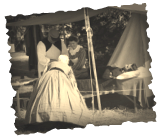







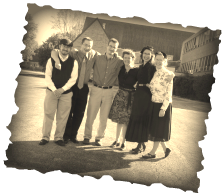
 RSS Feed
RSS Feed
